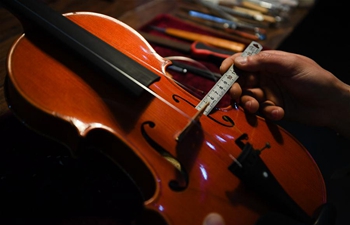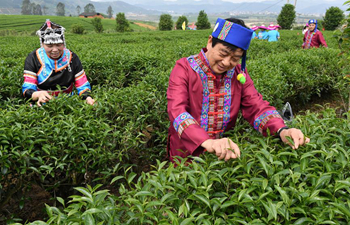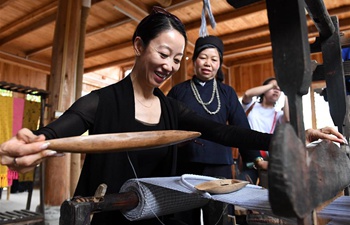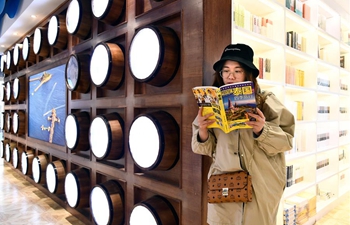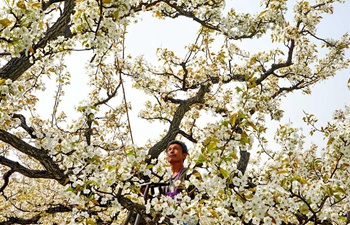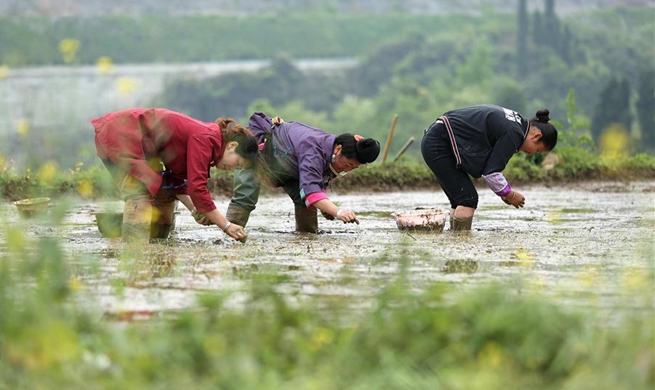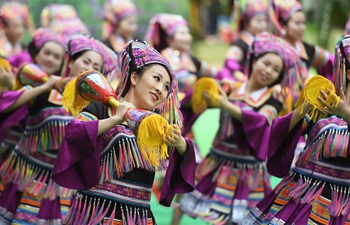NANCHANG, April 20 (Xinhua) -- After gently putting all the greenware into the kiln, Yang Hao and his wife began their anxious 24-hour wait.
"This is the most fascinating part of making Chinese Tenmoku," said Yang.
Chinese Tenmoku tea bowls, a type of pottery and porcelain originating from the southern Song dynasty some 900 years ago, are famed for their "oil spot" effects, the result of molten iron in the glaze during firing.
Tenmoku got its name from the temples around China's Tianmu Mountain, where iron-glazed bowls were used to serve tea for distinguished guests. The technique was later introduced to Japan by Japanese Buddhists who came to the temples to practice. But the variety of Tenmoku the Yangs make is especially rare and precious, as it contains a real leaf at the bottom.
After firing, the leaf becomes very delicate and embeds itself at the bottom of the porcelain, its veins creating an exquisite pattern.
"No two leaves are exactly the same, so every bowl is unique," said Yang. "But it is also full of uncertainty, as we can't tell what is going on inside the kiln."
Yang, 29, quit his job in Guangzhou, where he worked for six years, and came back to his hometown in Ji'an City in east China's Jiangxi Province with his wife last year.
Kilns in Ji'an have been recognized for producing outstanding ceramics since the Tang dynasty, and porcelain from the city is often called "Jizhou ware."
The art of making leaf-patterned Tenmoku bowls disappeared during the Yuan dynasty, only to be revived in the 1980s. A perfect leaf Tenmoku bowl is extremely hard to obtain and can fetch thousands of yuan each.
"Different tree leaves show distinct characteristics in the fire. Some may curl up or suffer damage in the process and therefore the outcome is unpredictable," said Yang.
To improve their skills, the couple has started experimenting with different types of leaves.
"People send us leaves and we return a leaf bowl to them. If we fail, we will send them a leaf bowl that we made before," said Yang.
The couple has tested almost all types of mulberry leaves and a variety of other leaves from the Chinese mainland. "Though the success rate is very low, we will carry on the experiment," he said.
"We have recently made some Tenmoku bowls successfully with Bodhi leaves, and have also tried to replace leaves with flowers," Yang said. "We hope through our efforts, more people will be introduced to the charms of Jizhou ware."




